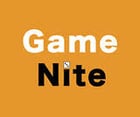

Cartography®
You have unearthed the pieces of an ancient Chinese map.
As you put a map together, you are drawn into the turbulent times of the Han dynasty and a land of mystical kingdoms. Like one of the legendary warlords, you can extend your kingdom, as you build castles to capture land. Cartography® is reminiscent of the ancient game “Go” with the addition of a map making mechanic. As the map changes, strategy and spatial perception are the keys to success and nothing is left to chance. Cartography® is easy to learn but challenging to master. Join the battles and intrigues found in Luo Guanzhong’s epic tale “Romance of the Three Kingdoms.”
Cartography® is a contemporary mind game, or abstract strategy game, a fusion of Go and Carcassonne.




(Auf Englisch)
Reviews
Creative & strategic
The ability to build the board each game…allows players to create a unique game each time they play. I loved how players had open information as to what tiles were available, as this not only allowed for creativity, but it allowed the player…to plan their own strategy while waiting for their turn. Cartography does away with the randomness and yields an excellent gaming experience. This game will appeal to all players who enjoy strategic, open information games
A game perfect for the family and their friends
The Child Geeks found the game to be visually appealing. They liked how the “world” of the game opened up to them. According to one Child Geek, “It’s neat to see rivers come into view and mountains. It reminds me of the fog of war you see in video games.” Parent Geeks: “A neat game. Small and simple looking, but oh man, this game really requires you to think!” “I like this game. I like how it looks and how it plays. I get a bit frustrated at times with the castles, but I think it’s a fun game anyone could enjoy.” Gamer Geeks: “It really is a mix of Go and Carcassonne. You have to think both short and long-term, bait your opponent and bluff your way to victory. I’m really enjoying it.”
Transformation
“[Cartography] is heavily influenced by Go, but I think the complete transformation of the board from a 19×19 grid to a shifting array of triangular tiles and walls has completely changed the game, if you’ll pardon the semi-pun. Its constant evolution during play means that a) you’re never totally sure of your position, as your opponent could suddenly open up new fronts you weren’t expecting, and b) every game is different….”
Michale Fox of Little Metal Dog Show
Serge Pierror of Game Nite
Father Geek






